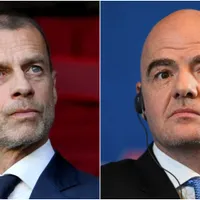A recent study has found that a significant amount of players at the 2023 Women’s World Cup had earnings lower than $30,000 last year. FIFPRO, the worldwide soccer player representative organization, conducted the poll by asking 260 total players about their wages. These featured athletes were from 26 of the 32 participating national teams at the tournament.
The study found that one-third of these Women’s World Cup players make less than $30,000 a year. This figure includes salaries from both national team and clubs combined. However, prize money at the tournament in Australia and New Zealand did not feature in this final tally. One in five of those questioned also helped supplement their annual income with a second job.
Some players have not received all Women’s World Cup earnings
Earlier reports stated that the prize money for the 2023 Women’s World Cup would increase to $150 million. While this is significantly higher than previous women’s competitions, it is still a fraction of what men’s players receive. Players at the Women’s World Cup should have earned a minimum of $30,000 (pre-tax) for competing at the tournament. Some players have yet to receive their World Cup bonus.

The Women’s World Cup set viewership records, but compensation has not been adequate.
“The players gave everything they had to put on a brilliant World Cup, but there are still important gaps that need addressing,’’ stated Sarah Gregorius, FIFPRO Director of Policy and Strategic Relations for Women’s. “We will be seeking to work through these issues with stakeholders and resolve them as soon as possible.”
“A lot of players have been paid and we’re getting a lot of feedback on how life-changing this is for them, and at the end of this hopefully we’re in a position to say 100% of the players have been paid [and that] it’s really shifted the needle when it comes to compensation, gender equity and pay equity in football more broadly and in sport more broadly.”
Study unveils certain medical tests were not performed on the players
The study also found that many athletes were unhappy with the physical demands of the tournament, 53% of the players polled believed they did not get ample rest before the start of the tournament. Two-thirds claimed to not be at their peak physically ahead of the Women’s World Cup.
Then, 86% of players also stated clubs forced them to rejoin their clubs less than two weeks after the competition. FIFPRO previously recommended a break of four weeks after the completion of the Women’s World Cup. The organization suggested players do not rejoin official club training for six weeks.
The poll also revealed that 22% of players did not have an electrocardiogram (ECG) ahead of the tournament. FIFA currently has regulations in place for certain medical tests, including ECGs.
“Anything below 100 percent when it comes to access to an ECG or undertaking a pre-tournament medical is not acceptable,” proclaimed Dr. Alex Culbin, FIFPRO’s Head of Strategy & Research for Women’s Football. “All players need to complete these important checks before they compete, and the regulations need to be applied and adhered to in full.”
Spain ended up beating England in the 2023 Women’s World Cup Final. It was the team’s first-ever triumph at the competition. The nation only just qualified for their first Women’s World Cup in 2015.
PHOTOS: IMAGO.















